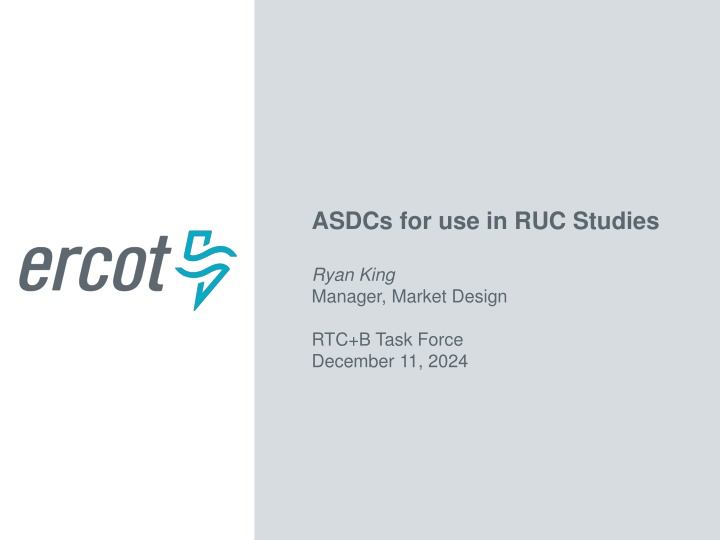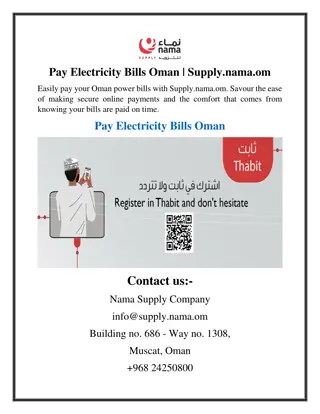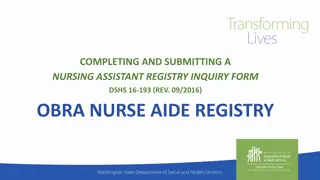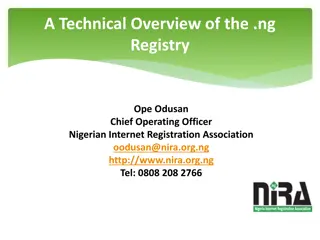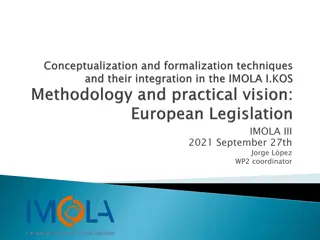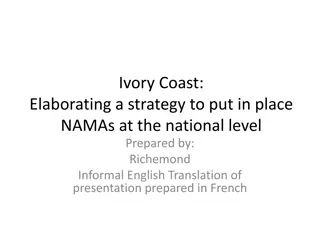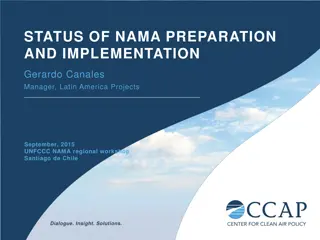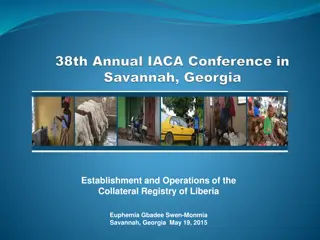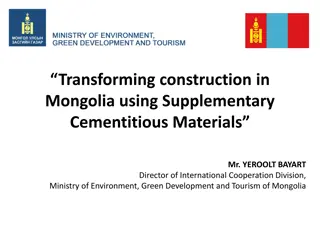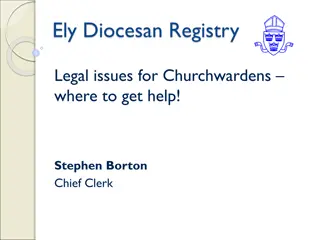Overview of NAMA Registry Development & Operations
The NAMA Registry is a dynamic web-based platform established by the COP to record nationally appropriate mitigation actions. Explore the timeline, fundamentals, challenges, and opportunities associated with the registry, along with statistics on registry content in 2014.
Uploaded on Apr 04, 2025 | 2 Views
Download Presentation

Please find below an Image/Link to download the presentation.
The content on the website is provided AS IS for your information and personal use only. It may not be sold, licensed, or shared on other websites without obtaining consent from the author.If you encounter any issues during the download, it is possible that the publisher has removed the file from their server.
You are allowed to download the files provided on this website for personal or commercial use, subject to the condition that they are used lawfully. All files are the property of their respective owners.
The content on the website is provided AS IS for your information and personal use only. It may not be sold, licensed, or shared on other websites without obtaining consent from the author.
E N D
Presentation Transcript
ASDCs for use in RUC Studies Ryan King Manager, Market Design RTC+B Task Force December 11, 2024
Agenda Recap: RUC under RTC RUC ASDCs Overview Analysis Questions/Discussion/Next Steps 2 PUBLIC
Recap: RUC under RTC To effectively project system conditions and potential needs, RUC will be modified to co-optimize energy and Ancillary Services (AS). Co-optimization will already inherently reduce the need for RUC by giving more flexibility to the RUC optimization engine Today, RUC looks at the Resources planned to be available and from where AS is being provided to determine whether additional Resource commitments are needed to meet the load forecast, as well as resolve transmission congestion. Under RTC, RUC will look at the Resources planned to be available to determine whether additional Resource commitments are needed to meet the load forecast and AS Plan, as well as resolve transmission congestion. RUC will use new information contained in the COP to determine how much capability for each AS product each Resource will be capable of providing RUC is a reliability backstop that is required to meet NERC requirements and maintain reliability. Ensuring RUC can meet the full AS Plan is critical to this function. 3 PUBLIC
RUC ASDCs - Overview The RUC and SCED optimizations consider different problems The SCED optimization is solving for dispatch Only considers the incremental offers and penalty costs of AS The RUC optimization is solving for commitment Considers additional costs in the form of startup and minimum energy costs RUC will be built with the capability to use RUC ASDCs. RUC will attempt to solve for a Resource commitment that meets the Load forecast and AS Plan considering Resources COPs and using defined penalty curves. Where RUC commits resources to ensure sufficient capacity to meet the Load forecast and AS Plan, this will be accounted for in the SCED pricing run. The Reliability Deployment Price Adder process will apply to both energy and AS, and the adder for each AS product will be the positive increase in MCPC between the dispatch and pricing run 4 PUBLIC
RUC ASDCs- Analysis ERCOT staff are conducting some internal analysis using the AORDC to understand the level of ASDCs required to meet the Load Forecast and AS Plan Objective is to determine whether current AORDC penalty curves are sufficient to meet the Load Forecast and AS Plan or whether an adjustment to penalty curves is required. 5 PUBLIC
RUC ASDCs - Analysis 1) Looking at historical Operating Days with significant negative < 2000 MW HASL Margins where units received RUC commitments 2) Reviewing and determining the total commitment cost of the units which were RUC-committed on that day 3) Using current AORDC-derived curves (bounded by AS Plan) to determine the estimated value of the AS shortage and comparing it with the commitment cost of RUC d units to determine whether or the extent to which these units would have been committed If the change in the AS shortage value (from the AORDC) from committing a unit based on its HSL is greater than that unit s commitment cost, we assume RUC would have committed this resource. If the change in AS shortage value is less than a unit s commitment cost, we assume RUC would have committed something less than the total capacity required to meet the AS Plan for that day. 6 PUBLIC
RUC ASDCs - Analysis Graphic below illustrates this comparison Unit Commitment Cost AS PLAN AS Shortage 7 PUBLIC
Next Steps ERCOT plans to share additional analysis and discussion around the design penalty curves for use in RUC at the next RTC+B Task Force meeting 8 PUBLIC
